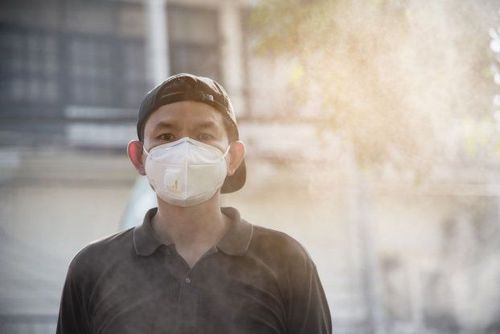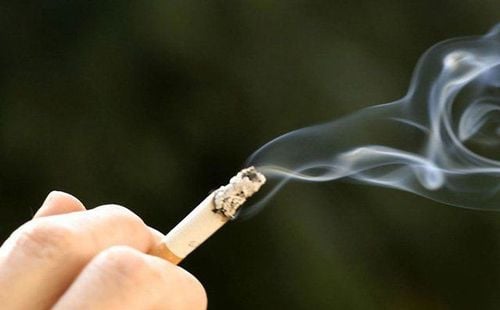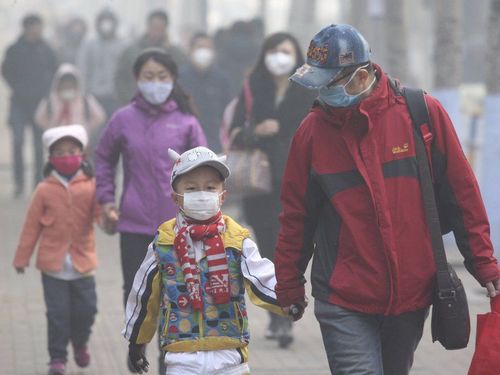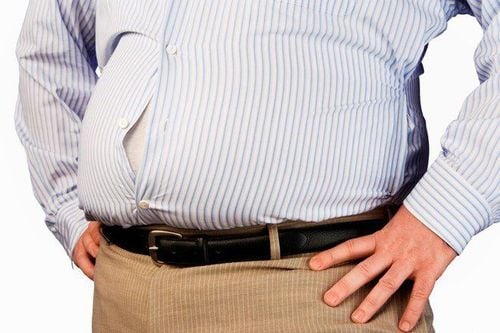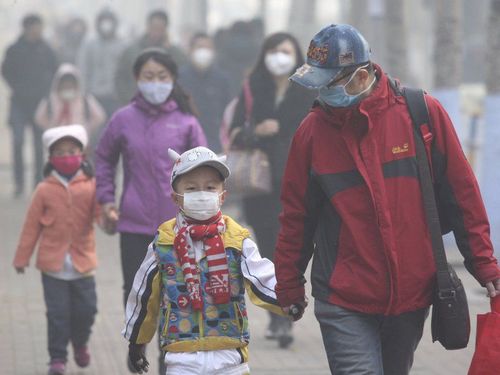This is an automatically translated article.
The Air Pollution Index is a measure of daily air quality assessment. Hanoi's air pollution index in recent days is at an alarmingly high level, which can cause many bad consequences to human health.
1. What is the Air Pollution Index?
AQI (Air Quality Index) is an index that reports daily air quality. This is considered a simplified measure of air pollution, indicating how clean or polluted the air around us is. The higher the risk to public health, the higher the AQI. The AQI focuses on the health effects people can experience within hours or days of breathing polluted air.
EPA (The U.S. Environmental Protection Agency - US Environmental Protection Agency) calculates the AQI index with 5 main air pollution parameters:
Ground ozone;
Molecular pollution (also known as suspended particles): Usually assessed through fine dust index PM 2.5 and PM 10 . These dust particles enter the respiratory tract when people breathe.
PM (Particulate Matter) means particulate matter (solid or liquid). PM 2.5 refers to particles less than or equal to 2.5 micrometers (μm) in size. The PM 10 number refers to particles less than or equal to 10 μm in diameter (but larger than the PM 2.5 size). PM2.5 and PM10 dust particles are formed from substances such as carbon, sulfide, nitrogen and other metal compounds. In large cities, PM 2.5 fine dust particles can be generated from industrial activities such as burning fossil fuels, or dust from construction sites, street dust, garbage burning, fires, industrial smoke. industry, deforestation, smoking, and especially from vehicle emissions. Carbon monoxide (CO).
Sulfur dioxide (SO2).
Nitrogen dioxide (NO2).
For each pollutant, EPA has established national air quality standards to protect public health. The EPA has assigned a specific color to each range of AQI values so that it is easy for people to understand whether air pollution is reaching unhealthy levels in their communities.
Some countries in the world have their own AQI scale, such as the Canadian Air Quality and Health Index, the Malaysia Air Pollution Index, the Singapore Pollution Standards index.
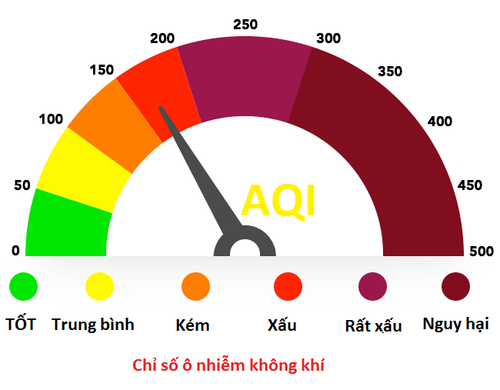
Rủi ro đối với sức khỏe cộng đồng càng cao khi chỉ số chất lượng AQI càng lớn
2. Hanoi Air Pollution Index
Air pollution index in Hanoi as well as many countries in the world is based on AQI.
According to recent statistics, Hanoi is constantly warned of air pollution with high AQI index, up to 170. This situation is considered very bad, and people should limit, not should. on the street a lot.
Air pollution is a great danger to human health. According to medical experts, an average adult breathes about 15 m3 of air per day. Although pollutants in the air are usually invisible, they can have many adverse effects on the entire body, including the heart, liver, lungs and respiratory system, or even the developing fetus. mom.
3. Health effects of air quality
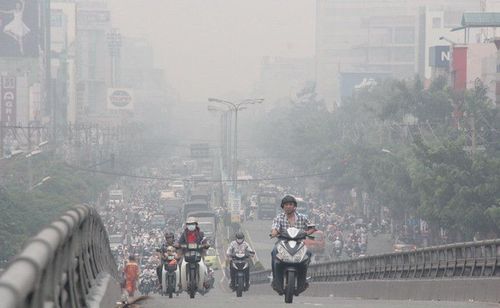
Ô nhiẢnh hưởng của ô nhiễm không khí tác động rõ rệt nhất lên hệ hô hấp, đặc biệt là phổi
3.1. Effects on the respiratory system The effects of air pollution on the respiratory tract depend on the type and mix of pollutants, the concentration in the air, the duration of exposure, and the amount of the pollutant being detected. inhaled and the amount of contaminant entering the lungs.
While PM10 enters the body through the airways and accumulates on the lungs, PM2.5 is especially dangerous because they are so small that they can wriggle into the lungs, pulmonary veins and enter the circulatory system. blood return. PM 2.5 dust plus a lot of CO or SO2, NO2, will prevent hemoglobin from combining with oxygen, making cells lack oxygen.
The effects of air pollution are most pronounced on the lungs. Symptoms can be seen soon after exposure to high levels of pollution, including irritation of the airways, difficulty breathing, and an increased risk of an asthma attack.
Exposure to ozone and dust particles, pollutants reduces lung function, and at the same time aggravates chronic lung diseases. Long-term exposure to air pollutants can increase the risk of lung cancer.
Low air quality causes patients with allergic rhinitis and sinusitis to go to the doctor a lot. The nose is the gateway of the respiratory tract, so it is the first organ affected by changes in weather or environment, climate.
3.2. For the heart Studies show that air pollution has a negative impact on heart health, increasing the risk of heart attack and stroke rates.
Small dust particles, chemicals or anti-inflammatory substances in dust can spread from the lungs into the circulatory system, affecting the heart. The reason is that air pollution affects the ability of blood vessels to dilate and constrict. Under the impact of polluted air, cigarette smoke, blood vessels are reduced in size, hindering blood circulation. Air pollution also increases the risk of blood clots forming in the arteries - the main cause of heart attacks.
3.3. For the reproductive process Women living in air-polluted areas are twice as likely to have a child with autism than the general population. The extent of the effects of air pollution on the fetus will increase in the late stages of pregnancy.
In addition, air pollution has also been linked to reduced sperm quality, which affects a man's ability to have children.
3.4. Kidney damage Air pollution is strongly associated with kidney disease and kidney failure. The reason is that air pollution creates a burden that makes the kidneys unable to filter out all the pollution molecules in the blood.
3.5. Other problems Weak bones: Air pollution increases the risk of osteoporosis and related fractures. This effect is similar to the effect of cigarette smoke on the body's skeletal system. Skin aging: Pollutants can destroy skin cells and affect the skin's ability to regenerate itself, causing changes in skin pigmentation, accelerating the aging process causing the skin to deteriorate. Headaches: During times of high pollution, hospitals also often receive more migraines.
4. Limiting the effects of air pollution
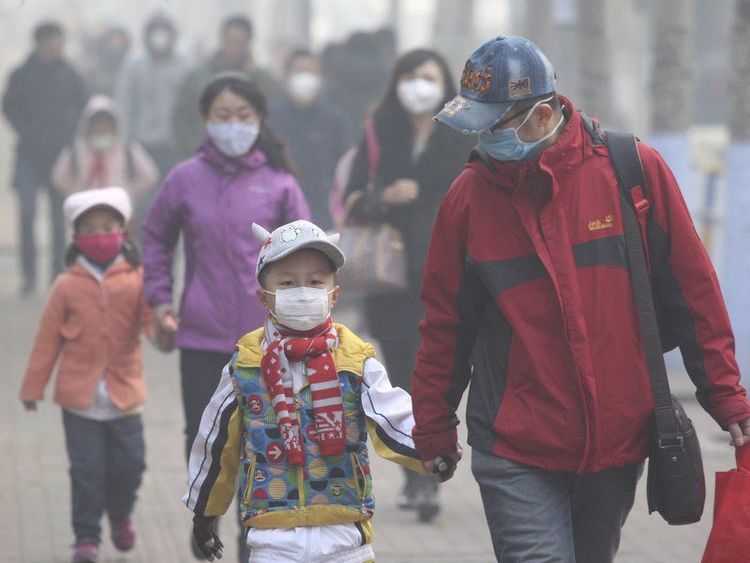
Đeo khẩu trang khi ra đường để hạn chế ảnh hưởng của ô nhiễm không khí
Here are some measures that can be taken to limit the effects of air pollution and protect the health of yourself and your family:
Do not exercise in a place with a lot of dust: Physical activity The higher it is, the higher the rate of breathing will increase and change the breathing pattern from through the nose to through the mouth. Then the nose will not be able to filter dust pollution from the air. Therefore, activities such as jogging or cycling in polluted places such as the streets have many potential health hazards. Jogging or cycling in polluted places such as the streets is very dangerous to health. Even healthy people who work or exercise outdoors are very susceptible to the side effects of air pollution, especially when there are high levels of ground-level ozone. Therefore, people with heart disease or lung disease should avoid heavy exercise. People with chest pain, shortness of breath, or cough should see a doctor, taking symptom-reducing medication if prescribed in advance. If symptoms persist, the person should see a doctor. Plant trees around your home and workplace. Trees block a lot of dust around your environment, creating more oxygen for your living environment. Especially in cold weather, it is important to avoid walking along busy streets with a lot of smoke from vehicles. During the hot season, air pollution levels are usually higher on hot days, so try to avoid outdoor activities or only do it in the morning when pollution levels are usually lower. Wear a mask when going out, wear glasses to reduce exposure to dust. Choose car or vehicle, public transport to move. Cars with car air purifiers can partially filter the outside air and give you a cleaner air environment. In addition, the use of public transport also contributes to reducing emissions.
Please dial HOTLINE for more information or register for an appointment HERE. Download MyVinmec app to make appointments faster and to manage your bookings easily.




